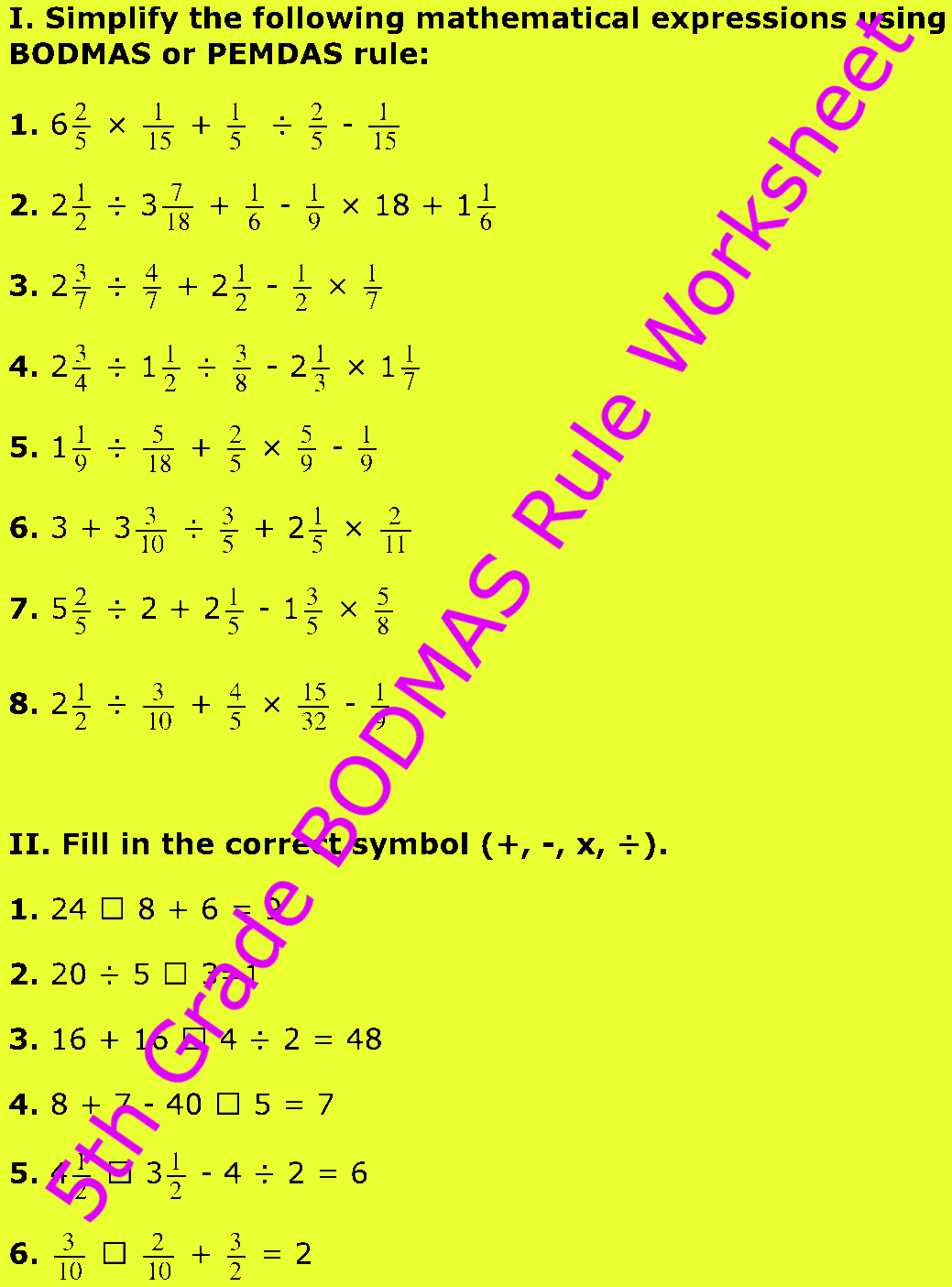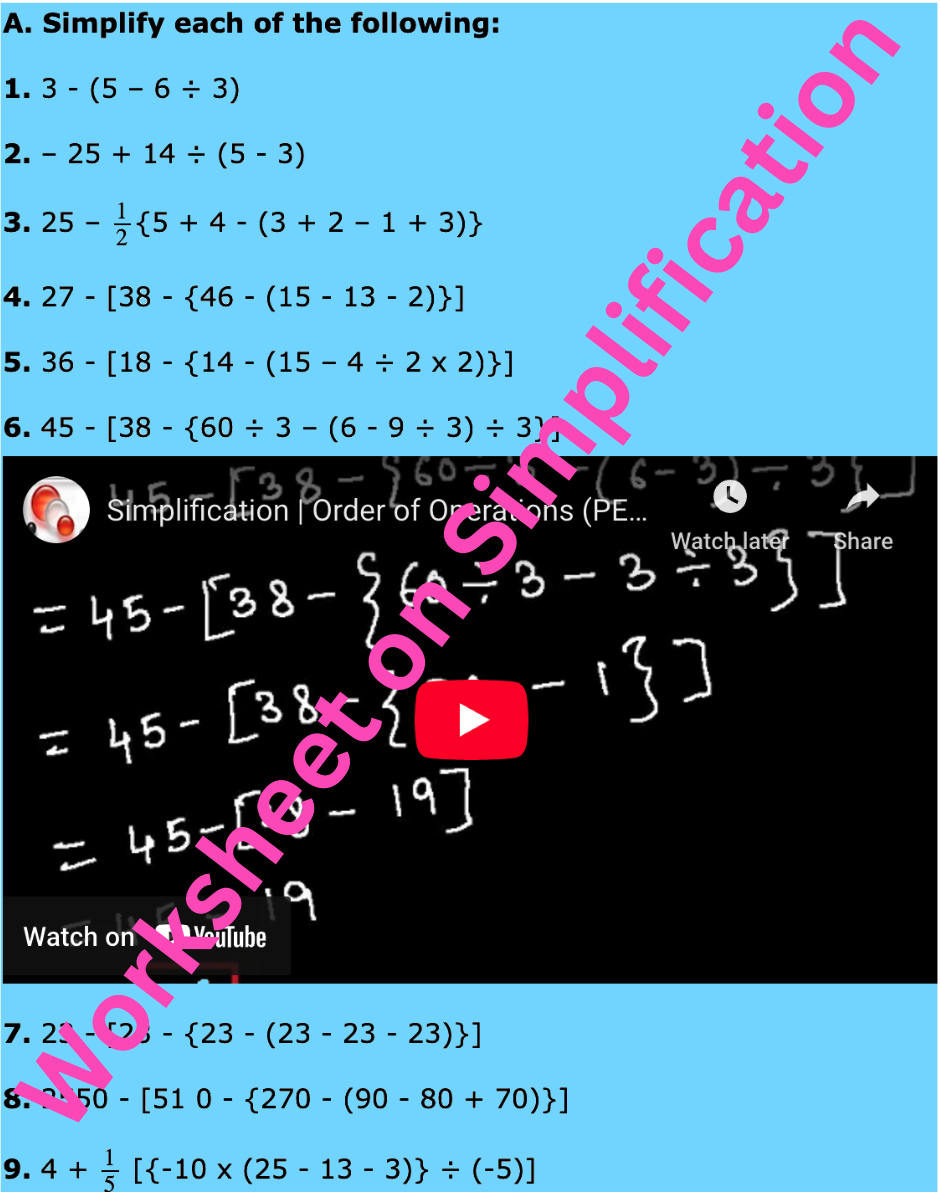Comparing Decimals
In comparing decimals, we will learn how to compare the two decimal numbers and also arranging the decimals in ascending or descending order.
One decimal number is either greater than or less than or equal to the other decimal number.
The following steps will help us to compare the decimal numbers:
Step I: Obtain the decimal numbers.
Step II: Compare the whole parts of the numbers. The whole number part with greater number will be greater. If the whole number parts are equal, then go to next step.
Step III: Compare the last left digits of the decimal parts of two numbers with the greater left digit at the last will be greater. If the left digits at the last of decimal parts are equal, then compare the next digits and so on.
Note: Now we will follow the steps and try to solve the various types of questions on comparing decimals accordingly. While comparing the two decimal numbers, convert each of the decimal numbers into like decimals and then solve.
Three different types of questions based on
comparing decimals:
A. First compare the whole number part of the decimal number. Decimal with the greater whole number is greater.
1. Compare 23.14 and 8.67
Solution:
In 23.14 the whole number part is 23 and in 8.67 the whole number part is 8.
But 23 > 8
Therefore, 23.14 > 8.67
B. If the whole number part is the same, then compare the digit at the tenths place. The decimal with the greater tenths digit is greater.
2. Compare 53.47 and 53.81.
Solution:
In 53.47 and 53.81, the whole number part is the same, i.e., 53.
In 53.47, the decimal part is .47 and the digit in the tenths place is 4.
In 53.81, the decimal part is .81 and the digit in the tenths place is 8.
But 8 > 4
Therefore, 53.81 > 53.47
C. If the whole number part and the digit in the tenths place are the same, then compare the digit at the hundredths place and so on.
3. Compare 81.39 and 81.37.
Solution:
In 81.39 and 81.37, the whole number part is the same, i.e., 81.
In 81.39 and 81.37, the decimal part in the tenths place is the same, i.e., 3
In 81.39, the decimal part is .39 and the digit in the hundredths place is 9.
In 81.37, the decimal part is .37 and the digit in the hundredths place is 7.
But 9 > 7
Therefore, 81.39 > 81.37
Worked-out examples on comparing decimals and arranging decimals:
1. Which is greater of 58.23 and 49.35?
Solution:
The given decimals have distinct whole number parts, so we compare whole number parts only.
In 58.23, the whole number part is 58.
In 49.35, the whole number part is 49.
But 58 > 49
Therefore, 58.23 > 49.35
2. Write the following decimals in ascending order:
5.64, 2.54, 3.05, 0.259 and 8.32
Solution:
To convert the given decimal numbers into like decimals, we get
5.640, 2.540, 3.050, 0.259 and 8.320
Therefore, 0.259 < 2.540 < 3.050 < 5.640 < 8.320
Hence, the given decimals in ascending order are:
0.259, 2.54, 3.05, 5.64 and 8.32
3. Arrange the following decimals in descending order.
8.14, 5.96, 0.863, 6.4, 3.81 and 0.5
Solution:
By converting each of the decimal number to like decimals we get
8.140, 5.960, 0.863, 6.400, 3.810 and 0.500
Therefore, 8.140 > 6.400 > 5.960 > 3.810 > 0.863 > 0.500
Hence, the given decimals in descending order are:
8.14, 6.4, 5.96, 3.81, 0.863, 0.5
● Related Concept
● Decimals
● Conversion of Unlike Decimals to Like Decimals
● Decimal and Fractional Expansion
● Converting Decimals to Fractions
● Converting Fractions to Decimals
● H.C.F. and L.C.M. of Decimals
● Repeating or Recurring Decimal
● BODMAS/PEMDAS Rules - Involving Decimals
● PEMDAS Rules - Involving Integers
● PEMDAS Rules - Involving Decimals
● BODMAS Rules - Involving Integers
● Conversion of Pure Recurring Decimal into Vulgar Fraction
● Conversion of Mixed Recurring Decimals into Vulgar Fractions
● Rounding Decimals to the Nearest Whole Number
● Rounding Decimals to the Nearest Tenths
● Rounding Decimals to the Nearest Hundredths
● Simplify Decimals Involving Addition and Subtraction Decimals
● Multiplying Decimal by a Decimal Number
● Multiplying Decimal by a Whole Number
● Dividing Decimal by a Whole Number
● Dividing Decimal by a Decimal Number
7th Grade Math Problems
From Comparing Decimals to HOME PAGE
Didn't find what you were looking for? Or want to know more information about Math Only Math. Use this Google Search to find what you need.
Recent Articles
-
Counting Numbers from 1 to 50 | Match the Number | Missing Numbers
Apr 04, 25 03:46 PM
In counting numbers from 1 to 50, recognize the numbers, count and then join the numbers in the correct number order. Here we mainly need eye-hand coordination to draw the picture and maintain the num -
Counting Eleven to Twenty with Numbers and Words |Numbers from 11 - 20
Apr 04, 25 03:21 PM
Counting eleven to twenty with numbers and words are explained below. One ten and one more is eleven. Eleven comes after ten. One ten and two more is twelve. Twelve comes after eleven. -
5th Grade BODMAS Rule Worksheet | PEMDAS | Order of operations|Answers
Apr 03, 25 03:11 PM
In 5th Grade BODMAS Rule Worksheet you will get different types of problems on mathematical expressions involving different operations, mathematical expression with 'brackets' and 'of' and simplifying… -
Worksheet on Simplification | Simplify Expressions | BODMAS Questions
Apr 03, 25 02:58 PM
In worksheet on simplification, the questions are based in order to simplify expressions involving more than one bracket by using the steps of removal of brackets. This exercise sheet -
Divisible by 2 Video |Test of Divisibility by 2 Trick| Rules| Examples
Apr 03, 25 10:25 AM
A number is divisible by 2 if the digit at unit place is either 0 or multiple of 2. So a number is divisible by 2 if digit at its units place is 0, 2, 4, 6 or 8.





New! Comments
Have your say about what you just read! Leave me a comment in the box below. Ask a Question or Answer a Question.